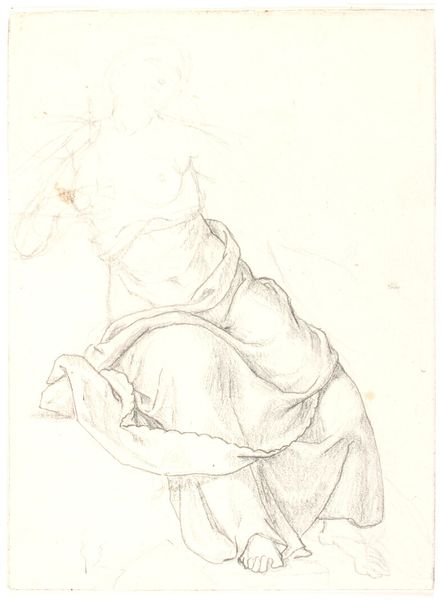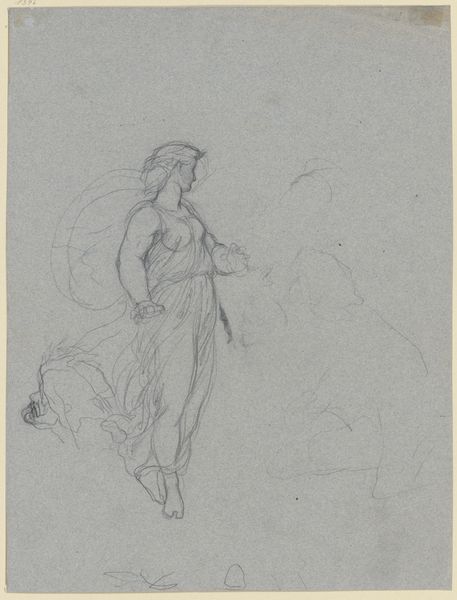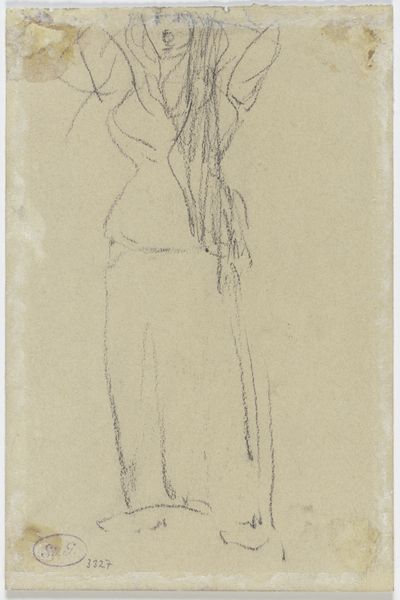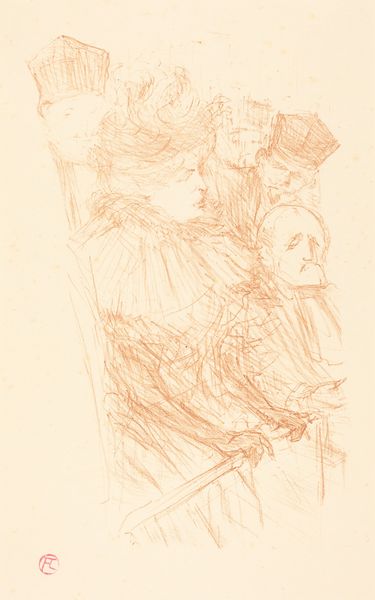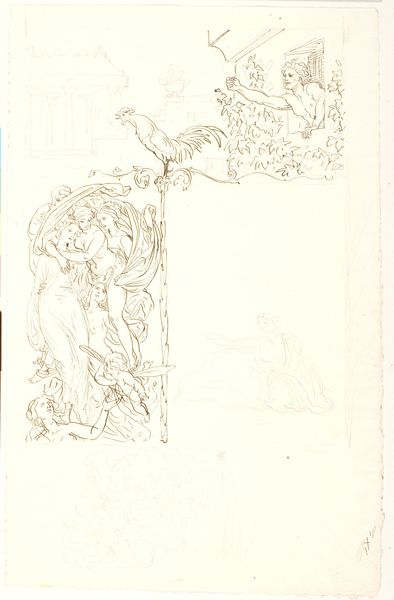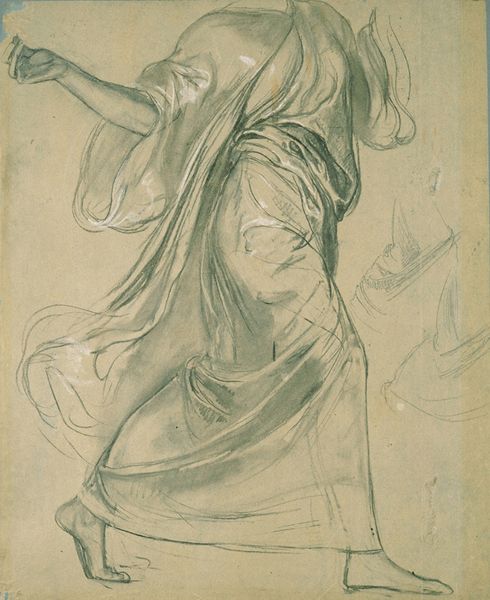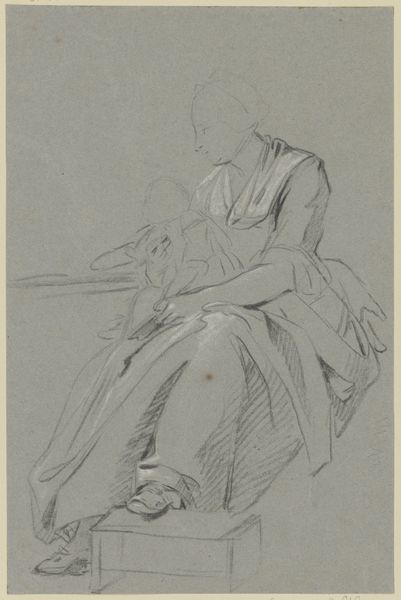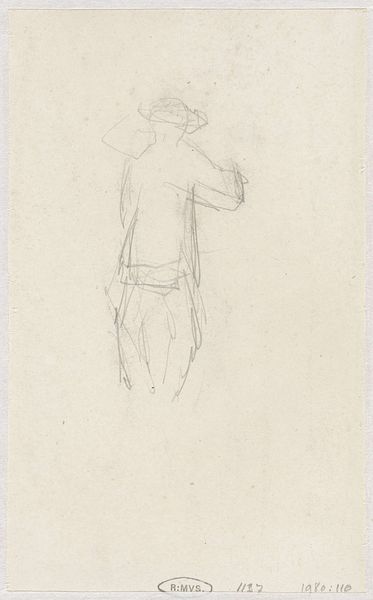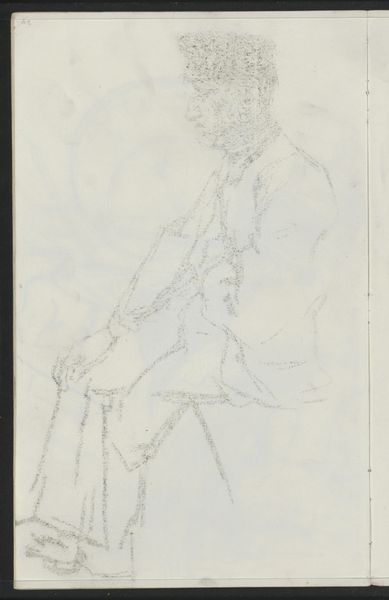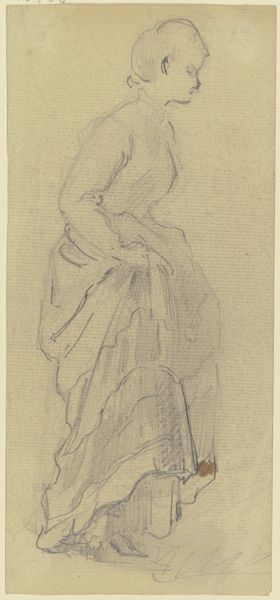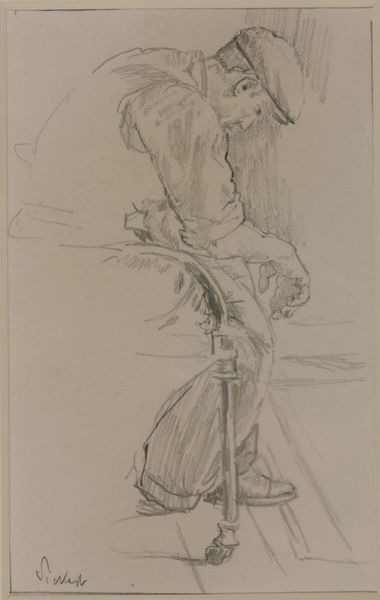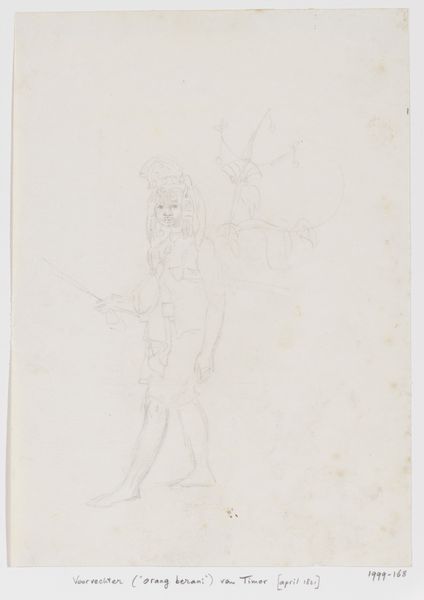
drawing, pencil
#
portrait
#
drawing
#
art-nouveau
#
figuration
#
romanticism
#
pencil
Dimensions: 11 1/4 x 7 1/8in. (28.6 x 18.1cm)
Copyright: Public Domain
Editor: So, this is "A Parisienne," a pencil drawing by Adolphe Léon Willette, sometime in the late 19th or early 20th century. It's… ghostly, almost unfinished. It looks like it might be a preliminary sketch for something bigger. What catches your eye about it? Curator: The materiality here is paramount. Notice the hasty quality of the line work. This speaks to the working-class aspect of producing 'high' art. It wasn't always about careful brushstrokes in the studio; sometimes it was a matter of quick sketches, cheaply produced for mass consumption, blurring the lines between art and illustration. How does the artist's choice of a seemingly disposable material – pencil on paper – challenge traditional notions of artistic value? Editor: That’s a great point. It’s almost like Willette is showing us the underbelly of Art Nouveau. I see elegance, but produced... pragmatically? Curator: Precisely. The Art Nouveau style, often associated with luxury, here is brought down to earth, viewed through the lens of labor and accessibility. Consider, too, the context of Parisian society at the time. Who would have consumed these images, and how were they circulated? Editor: Were they for newspapers, maybe? Little fashion plates, perhaps? It is very much giving *that*. I mean, did Willette's audience appreciate this raw aesthetic, or was it simply a byproduct of faster production? Curator: That tension between artistic intention and the demands of the market is key. Think about how the industrial revolution changed the landscape for artists and their process. It reframes how we see the artist's hand at work, revealing the socioeconomic conditions that shaped his practice. Editor: That connection between art and the social conditions in which it's made is fascinating to consider. Thanks for offering that context! Curator: My pleasure. Hopefully it prompts us to look beyond the surface and consider art as a product of its time, reflective of the forces of labor and capital.
Comments
No comments
Be the first to comment and join the conversation on the ultimate creative platform.
